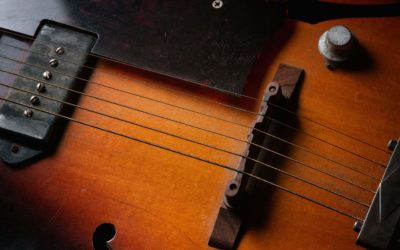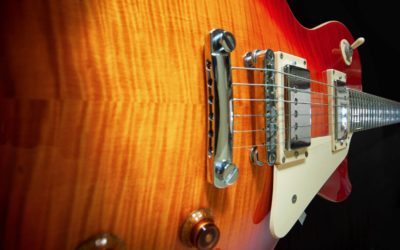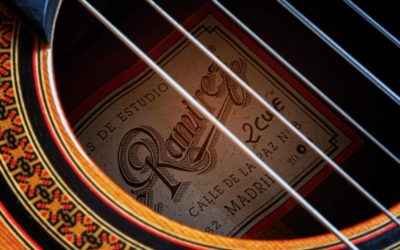Table of Contents
What is Contrapuntal Improvisation?
Contrapuntal Improvisation is the improvising of two separate musical ideas at the same time, oftentimes a bass part and a melodic part. However, for guitar, these parts tend to be monophonic in nature, thus chords and intervals, though possible, are used sparingly due to the nature of the fingerings involved.
Contrapuntal Improvisation for Guitar
One of the most challenging aspects of this technique is that pianist have two hands/ten fingers which they can use for improvising. However, guitarists have only one fretting hand and only four fingers to choose from. Players will often use one finger to play a bass note and then two or three of the other fingers are used to play the other part. It is the juggling of the various fingerings needed in order to pull off the different parts that makes this tricky, while striving to keep both parts separate. And while the physical technique needed in order to pull it off is quite challenging, perhaps it is the mental independence that is initially more challenging. (See below)
Is it the same as Counterpoint?
It depends on your definition of Counterpoint. If you are going to use a standard classical reference, such as the famous book by Johann Joseph Fux, “The Study of Counterpoint”, then it comes down to whether or not the rules are adhered to. If you toss the rules out the window and only apply the “concept” of the Species, then yes, it would be considered counterpoint. After all you are playing one part over another part, however, with contrapuntal improvisation you are more likely to be applying more contemporary harmonic ideas instead of those that were used in the 1700’s. Of course it must be noted that many of those ideas are still valid, but a strict observation of them will yield music that will sound similar to the music of that time period. We are more interested in what I would call “contemporary counterpoint” or since we are improvising both lines, “contrapuntal improvisation”. Although this concept can be used for composition, we are more interested in exploring it in an environment that is improvisational in nature, particularly for Jazz improvisation.
Mental and Physical Independence
Although the physical technique for playing this on the guitar can be quite challenging, it is perhaps even more challenging to develop the mental dexterity. Whereas regular improvisation has the improviser playing against a harmonic background, whether it be chords, bass or both, the contrapuntal improviser has the challenge of creating the harmonic background at the same time that they are improvising an upper part. Players will have to develop over time the ability to hear both parts as being independent, as well as hearing the direction in which the parts are moving and at the same time being able to find the correct fingerings in order to complete the idea. By studying “Contrapuntal Improvisation” you will learn a system, while at the same time absorbing the necessary fingerings needed to improvise at a moment’s notice. The primary physical challenge is to be able to articulate both parts fluidly, while the mental aspects involve hearing both parts and creating and rendering the envisioned harmonic environment.
Keith Jarrett and the Koln Concert
The album that really opened my eyes to the concept of improvising multiple lines at once was Keith Jarrett’s infamous “The Koln Concert”. On this recording, Jarrett plays multiple lines and chords, all of which were created on the spot. Unlike other improvisers who would play over the chord changes of a Jazz standard, here Jarrett creates breathtaking explorations of what he was feeling at the moment. This was a revelation, and it is no surprise that this album is the best selling album in the ECM catalog. I like to call this “Pure Improvisation”, as the improviser is creating music in real time, without the “safety net” of a well practiced “Jazz Standard” or the player’s own composition. Needless to say, the physical and mental demands on the performer are quite intense. This album was a game changer for me as a guitarist.
Learning to Hear Polyphonic Parts
Perhaps the greatest initial hurdle that guitarist have while learning this technique is that of hearing multiple parts and being able to render them with the correct fingerings. Guitarists normally play in bands that have a bass player and or keyboard player and they only concerned with having their guitar part meld with the other parts. But, if they are interested in learning how to improvise two parts at once, they need to start listening to music that is played in this manner. When I first started to explore this technique, I bought some J. S. Bach piano books featuring his “Inventions”. Needless to say it took some work to arrange them for guitar, but in doing so I started to understand what fingerings and positions were suitable for playing this type of music. They were challenging, as well as being very educational. I highly recommend that you try it!
Another, and more conventional approach, would be to play pieces in the Classical Guitar repertoire that feature this type of technique. Many of the Bach pieces are excellent for studying this material. For instance, the famous “Bouree in Em” is one of the more popular Bach songs in the repertoire. Both heavy metal and jazz guitarists often include it in their repertoire.
Learning to hear two parts at once is of prime importance. If you want to learn how to speak Italian, you have to listen to Italians speak Italian, so that you can pick up the accents and nuances. The same is true for contrapuntal music.
The best way to learn how to hear the separate parts is to listen to the masters of this approach. While there are several guitarists who have adopted this technique, I’ve included examples of these three – for their different approaches, guitars, and techniques.
Joe Pass
Here Joe Pass takes several choruses of “Summertime” with and without sections of contrapuntal improvisation. He combines chords and bass notes, single notes and bass notes. He is representative of the “old school” solo jazz guitar and is one of the greatest guitarists who ever lived.
Stanley Jordan
Stanley Jordan brought a whole new approach to the guitar for playing contrapuntal lines on the guitar. His innovative playing style facilitated playing two parts at once by using two hands at once and tapping each part. This was quite remarkable when he first appeared on the scene.
Charlie Hunter
Taking the concept of contrapuntal improvisation to the next level, as well as establishing the current level, guitarist Charlie Hunter expanded the range of the concept by having special guitars built for him that combined both bass strings and guitar strings and used a groove oriented rhythmic approach which caught everyone’s attention when he first debuted. He has become the undisputed master of the contrapuntal style, especially when it comes to funky, contrapuntal rhythm.
I’ll be covering more about Contrapuntal Improvisation, as well as many other topics from my 40+ years of playing guitar. If you have any questions or a topic that you would be interested in seeing me cover, feel free to contact me!
Serge





0 Comments